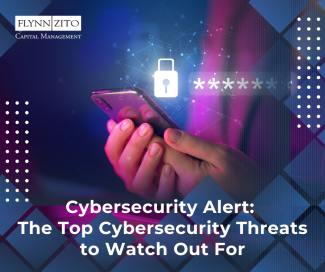
Cybersecurity Alert: The Top Cybersecurity Threats to Watch Out For
Cybersecurity is more important than ever as we continuously move toward more automated environments in a highly connected society. As more technologies develop, perpetrators keep exploring new tactics to exploit others. It's important to know today's most common cybersecurity threats to defend your data and your right to privacy.
Most Common Cybersecurity Threats
The most common cyberattacks are phishing, ransomware, social engineering, distributed denial-of-service (DDoS) attacks, and insider threats.
Phishing Attacks
What It Is: Phishing is a cyberattack in which individuals are duped, by deceptive emails, messages, or websites, into revealing sensitive information such as usernames, passwords, and credit card details.
Why It’s Risky: This cause of identity theft may result in loss of funds and allow intruders into confidential information.
How to Defend Yourself:
Be cautious of unsolicited emails or messages asking for personal information.
Verify the sender's authenticity before clicking on any links or downloading attachments.
Use email filtering tools to detect and block phishing attempts.
Ransomware
What It Is: Ransomware is a malicious program that encrypts a victim’s data making it inaccessible, unless they pay the ransom to the attackers.
Why It’s Dangerous: Businesses may be forced out of operation and face steep financial costs.
How to Defend Yourself:
Regularly back up your data to an external drive or cloud storage.
Keep your software and systems updated to defend against vulnerabilities.
Use robust antivirus and anti-malware software.
Social Engineering
What It Is: Social engineering involves getting people to do things that an attacker wants, like persuading them to give up private information or perform actions that harm security. For example, you may be asked to pass on a USB flash drive, click on special links, or respond to special pleas or business requests.
Why It’s Dangerous: Social engineering attacks human psychology, not technical systems, and is therefore harder to detect and prevent.
How to Defend Yourself:
Be skeptical of unsolicited requests for sensitive information.
Verify the identity of individuals before sharing personal or financial details.
Educate yourself and your employees about common social engineering tactics.
Distributed Denial of Service Attacks
What It Is: A distributed denial-of-service (DDoS) attack is launched when countless devices bombard a server, service, or network with so much internet traffic that the response time slows to a crawl or breaks down altogether.
What It Means: This attack may overwhelm a network and make a site unusable. A DDoS attack is possible because several computers together may generate a much higher bandwidth requirement than any one of the computers may individually.
How to Defend Yourself:
Implement network security measures like firewalls and intrusion detection systems.
Use DDoS blocking services to mitigate the impact of an attack.
Regularly monitor your network for unusual traffic patterns.
Insider Threats
What It Is: Malicious actions or accidents resulting from employees, contractors, or other "insiders" with or without authorized access, compromising the entity they work for.
Why It’s Dangerous: An insider’s ability to steal data may result in leaks, employee sabotage, financial losses, and a blow to the brand.
How to Defend Yourself:
Implement strict access controls and monitor user activity.
Conduct regular security training and awareness programs.
Establish clear policies and procedures for handling sensitive information.
In Closing
The cyber threat landscape is always changing, and everyone’s sensitive data is at risk. By knowing today's top threats and how to manage and harden your defenses, you may significantly limit your exposure while improving your cyber profile.
Important Disclosures:
Content in this material is for educational and general information only and not intended to provide specific advice or recommendations for any individual.
This article was prepared by WriterAccess.
LPL Tracking #609848
